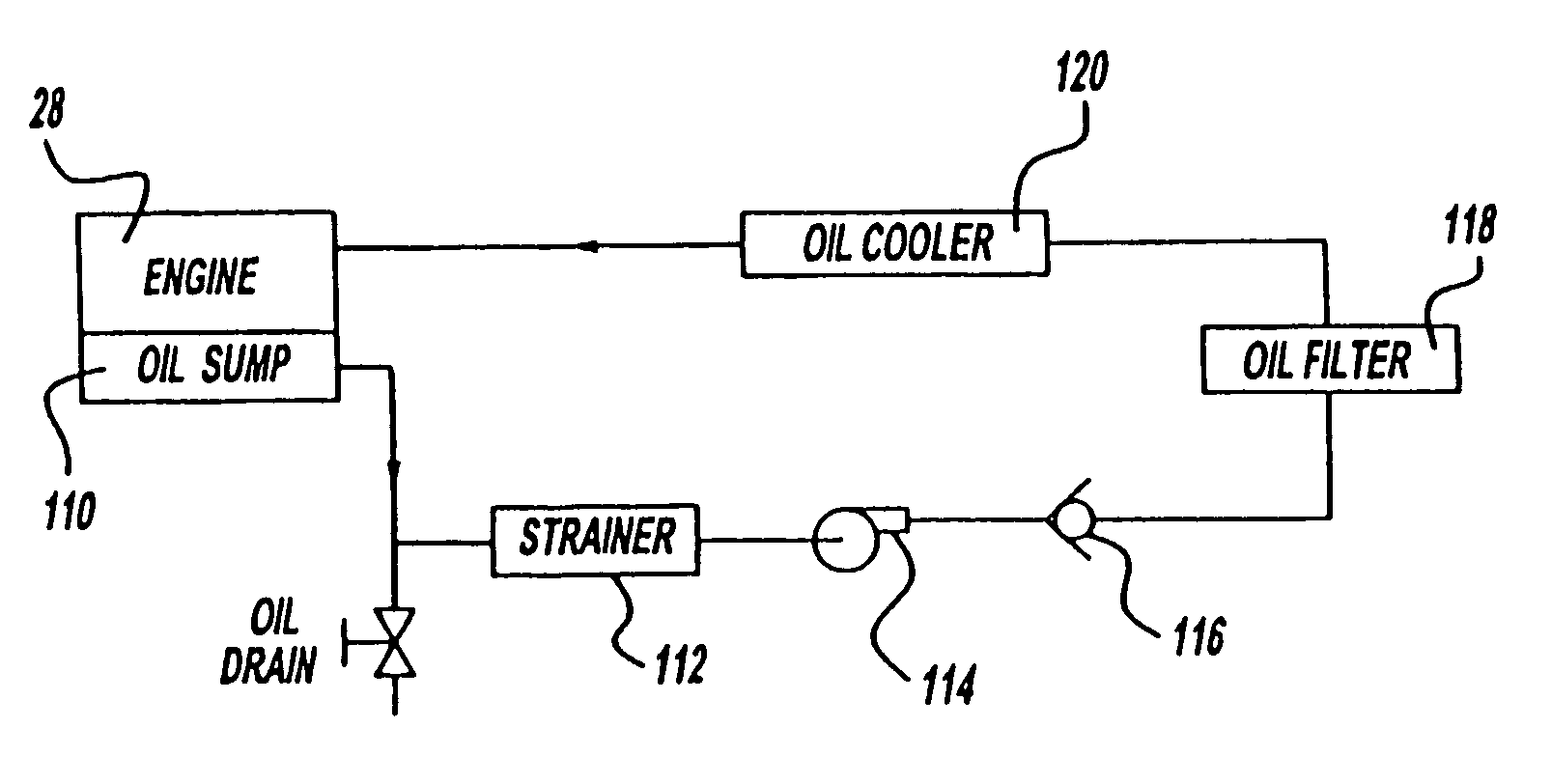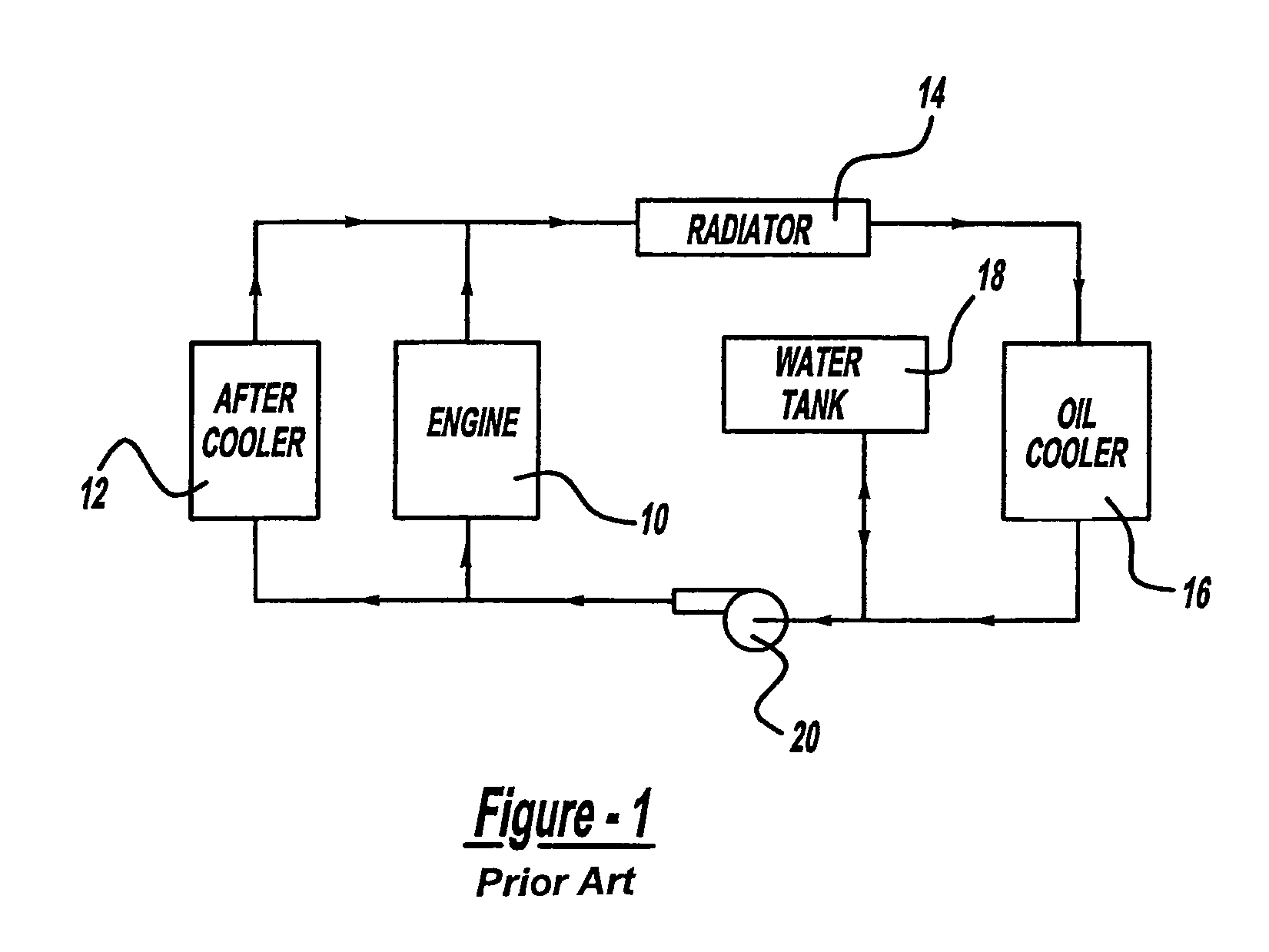Layover heating system for a locomotive
a technology for locomotives and heating systems, applied in the direction of engine starters, lighting and heating apparatus, heating types, etc., can solve the problems of affecting the operation of the engine, so as to achieve the effect of reducing the fluid flow through the radiator
- Summary
- Abstract
- Description
- Claims
- Application Information
AI Technical Summary
Benefits of technology
Problems solved by technology
Method used
Image
Examples
Embodiment Construction
[0042]The following description of the preferred embodiment(s) is merely exemplary in nature and is in no way intended to limit the invention, its application, or uses.
[0043]In FIG. 1, the schematic arrangement of a conventional cooling system for a locomotive diesel engine is shown. These systems were used extensively up to about 1980s. The cooling pump circulates the coolant in the direction of the arrows through the engine 10 (and a parallel aftercooler 12), through the radiators 14 and the oil cooler 16. A water tank 18 supplies the water to the system and maintains pressure head to the water pump 20. Other engine components in need of heating or cooling by the engine water (such as air compressor, fuel oil preheater, etc.) can be installed on this loop at appropriate locations. An important characteristic of this system is the fact that the coolant temperature at the inlet of the engine is the same as at the inlet to the aftercooler core. This limits the amount of air cooling a...
PUM
 Login to View More
Login to View More Abstract
Description
Claims
Application Information
 Login to View More
Login to View More - R&D
- Intellectual Property
- Life Sciences
- Materials
- Tech Scout
- Unparalleled Data Quality
- Higher Quality Content
- 60% Fewer Hallucinations
Browse by: Latest US Patents, China's latest patents, Technical Efficacy Thesaurus, Application Domain, Technology Topic, Popular Technical Reports.
© 2025 PatSnap. All rights reserved.Legal|Privacy policy|Modern Slavery Act Transparency Statement|Sitemap|About US| Contact US: help@patsnap.com



